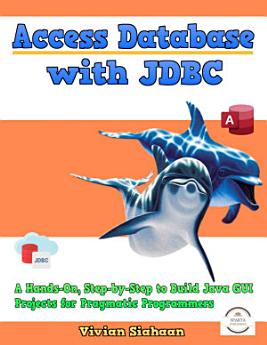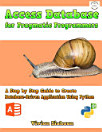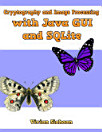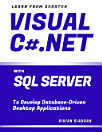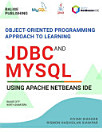Access Database with JDBC: A Hands-On, Step-by-Step to Build Java GUI Projects for Pragmatic Programmers
About this ebook
The lessons in this book are a highly organized and well-indexed set of tutorials meant for students and programmers. Netbeans, a specific IDE (Integrated Development Environment) is used to create GUI (Graphical User Interface applications).The finished product is the reward, but the readers are fully engaged and enriched by the process. This kind of learning is often the focus of training. In this book, you will learn how to build from scratch two access database management systems using Java. In designing a GUI and as an IDE, you will make use of the NetBeans tool.
In chapter one, you will create School database and six tables. In chapter two, you will study: Creating the initial three table projects in the school database: Teacher table, TClass table, and Subject table; Creating database configuration files; Creating a Java GUI for viewing and navigating the contents of each table; Creating a Java GUI for inserting and editing tables; and Creating a Java GUI to join and query the three tables.
In chapter three, you will learn: Creating the main form to connect all forms; Creating a project will add three more tables to the school database: the Student table, the Parent table, and Tuition table; Creating a Java GUI to view and navigate the contents of each table; Creating a Java GUI for editing, inserting, and deleting records in each table; Creating a Java GUI to join and query the three tables and all six. In chapter four, you will study how to query the six tables.
In chapter five, you will be taught how to create Crime database and its tables. In chapter six, you will be taught how to extract image features, utilizing BufferedImage class, in Java GUI. In chapter seven, you will be taught to create Java GUI to view, edit, insert, and delete Suspect table data. This table has eleven columns: suspect_id (primary key), suspect_name, birth_date, case_date, report_date, suspect_ status, arrest_date, mother_name, address, telephone, and photo.
In chapter eigth, you will be taught to create Java GUI to view, edit, insert, and delete Feature_Extraction table data. This table has eight columns: feature_id (primary key), suspect_id (foreign key), feature1, feature2, feature3, feature4, feature5, and feature6.
In chapter nine, you will add two tables: Police and Investigator. These two tables will later be joined to Suspect table through another table, Case_File, which will be built in the seventh chapter. The Police has six columns: police_id (primary key), location, city, province, telephone, and photo. The Investigator has eight columns: investigator_id (primary key), investigator_name, rank, birth_date, gender, address, telephone, and photo. Here, you will design a Java GUI to display, edit, fill, and delete data in both tables.
In chapter ten, you will add two tables: Victim and Case_File. The Case_File table will connect four other tables: Suspect, Police, Investigator and Victim. The Victim table has nine columns: victim_id (primary key), victim_name, crime_type, birth_date, crime_date, gender, address, telephone, and photo. The Case_File has seven columns: case_file_id (primary key), suspect_id (foreign key), police_id (foreign key), investigator_id (foreign key), victim_id (foreign key), status, and description. Here, you will also design a Java GUI to display, edit, fill, and delete data in both tables.
Ratings and reviews
- Flag inappropriate
About the author
Vivian Siahaan is an independent learner who likes to do new things. She was born, raised in Hinalang Bagasan, Balige, on the banks of Lake Toba, and completed high school education from SMAN 1 Balige. She started herself learning Java, Android, JavaScript, CSS, C ++, Python, R, Visual Basic, Visual C #, MATLAB, Mathematica, PHP, JSP, MySQL, SQL Server, Oracle, Access, and other programming languages. She studied programming from scratch, starting with the most basic syntax and logic, by building several simple and applicable GUI applications. Animation and games are fields of programming that are interests that she always wants to develop. Besides studying mathematical logic and programming, the author also has the pleasure of reading novels. Vivian Siahaan has written dozens of ebooks that have been published on Sparta Publisher: Data Structure with Java; Java Programming: Cookbook; C ++ Programming: Cookbook; C Programming For High Schools / Vocational Schools and Students; Java Programming for SMA / SMK; Java Tutorial: GUI, Graphics and Animation; Visual Basic Programming: From A to Z; Java Programming for Animation and Games; C # Programming for SMA / SMK and Students; MATLAB For Students and Researchers; Graphics in JavaScript: Quick Learning Series; JavaScript Image Processing Methods: From A to Z; Java GUI Case Study: AWT & Swing; Basic CSS and JavaScript; PHP / MySQL Programming: Cookbook; Visual Basic: Cookbook; C ++ Programming for High Schools / Vocational Schools and Students; Concepts and Practices of C ++; PHP / MySQL For Students; C # Programming: From A to Z; Visual Basic for SMA / SMK and Students; C # .NET and SQL Server for High School / Vocational School and Students. At the ANDI Yogyakarta publisher, Vivian Siahaan also wrote a number of books including: Python Programming Theory and Practice; Python GUI Programming; Python GUI and Database; Build From Zero School Database Management System In Python / MySQL; Database Management System in Python / MySQL; Python / MySQL For Management Systems of Criminal Track Record Database; Java / MySQL For Management Systems of Criminal Track Records Database; Database and Critptography Using Java / MySQL; Build From Zero School Database Management System With Java / MySQL.
